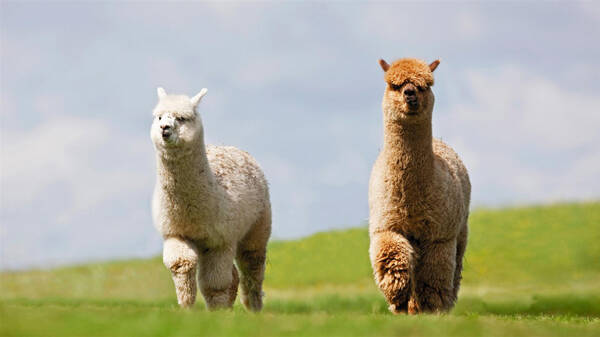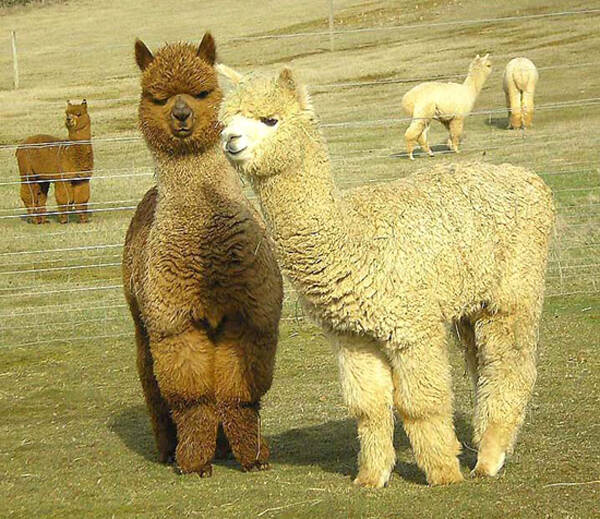Vicugna pacos
IUCN
LCBasic Information
Scientific classification
- name:Vicugna pacos
- Scientific Name:Vicugna pacos, Alpaca,Grass Mud Horse,Alpaca
- Outline:Ungulata
- Family:Artiodactyla Camelidae Alpaca
Vital signs
- length:120-225cm
- Weight:55-65kg
- lifetime:15-20years
Feature
One of the top ten mythical beasts made fun of by Chinese netizens
Distribution and Habitat
Alpacas are typical animals of the Andes Mountains in South America, mainly distributed in Peru, Bolivia and Ecuador. In addition to wild species, there are also a considerable number of domesticated varieties. In the 1980s, alpacas began to be exported to other countries for farming. Today, alpacas can be found in countries such as the United States, many European countries, New Zealand, Australia and the Netherlands. Although alpaca farming has increased outside its native territory, it is estimated that the South American alpaca population accounts for 99% of the world.
Alpacas are native to central Peru in the Andes Mountains at an altitude of 3000-6500 meters in the upper Amazon River. The climate here is harsh, with temperatures below 0°C at night and reaching 16°C during the day. Annual precipitation is 400-700 mm. In this semi-arid area, grass is prevalent and was once widely distributed in the South American continent. From tropical coasts to high and cold mountains, alpaca
Appearance
Alpacas weigh 55-65 kg, with head and body lengths ranging from 1200-2250 mm, tail length 150-250 mm, and shoulder height 900-1300 mm. They have a slender body and neck. They have a small head and large, pointed ears. Their fur coats are uniform or multi-colored. According to the Alpaca Owners and Breeders Association, there are as many as 22 colors of alpacas, ranging from white to black and brown. The upper and lower incisors and canines of adult males develop into fangs or fangs, which can be up to 3 cm long. These teeth in females are no less developed than in males. Apart from the difference in tooth morphology, sexual dimorphism in alpacas is not obvious.
The alpaca has a camel-like head, a raised nose, erect ears, a slender neck, and no hump. The wool fibers of alpacas are long and curly, and can reach 20-40 cm in length, 15-20 microns in fineness, and are shiny and can form large curls, which are draped in waves on both sides of the alpaca's body, soft and elastic. The
Details
The alpaca (scientific name Vicugna pacos, English name Alpaca) native to South America is also known as the Grass Mud Horse in my country. It is one of the top ten mythical beasts spoofed by Chinese netizens, and originated from Baidu World of Warcraft. The top ten mythical beasts, including the Grass Mud Horse, were first published on Baidu Encyclopedia (2009), and then quickly became popular and widely circulated in chat rooms and forums. Videos, cartoons and products about the "Grass Mud Horse" have also become the focus of worldwide attention. It has also become a synonym for "national curse" in online novels.

The alpaca is very docile and timid. If people go to feed it, the alpaca must wait until the people go away before eating, even if the owner is very familiar with it. However, it sometimes loses its temper and knows what pain is. For example, when it encounters something unpleasant, it can spray secretions and feces from its nose like a camel, or spit on the face of other animals to vent its resentment; when it feels pain, it can make miserable sounds like a camel. Alpacas have a very sharp hearing, which is used to detect enemy situations and decide where to escape as early as possible.
Alpacas mainly live in groups. In the forests of the Andes, more than 200 alpacas can often be seen living together. It is highly alert. When eating grass, one or several alpacas are always sent as guards. It can also predict weather changes. Every time a storm comes, the "guards" will carry the entire group to a safe place.
Alpaca wool is famous for its unique quality and color. Its toughness is twice that of sheep wool, it is free of grease, has few impurities, and has a net cashmere rate of 90%. Fashion made of alpaca wool is light, soft, comfortable to wear, has a good drape, does not wrinkle, and does not deform, and is favored by consumers in Europe, the United States, and Japan. Alpaca fur can be used as a higher-end substitute for wool. At the turn of the 20th and 21st centuries, alpaca wool textiles were popular in the international market.

Each alpaca can produce 3-5 kg of wool a year and is sheared once a year. The wool sells for $64-256 per kilogram. The price of each breeding alpaca is as high as $30,000. The demand for alpaca wool in the international market has increased. Japan is the world's largest consumer of alpaca wool, and its import volume has exceeded the traditional European market, and it pays the highest purchase price; South Korea and Hong Kong are also large consumer markets. Therefore, many breeders are optimistic about the development prospects of alpacas. However, alpacas are in short supply, mainly because of export restrictions in the place of origin. Peru has more than 3 million alpacas, accounting for 70% to 80% of the world's total, but exports are restricted. Chile only allows 300 to be exported each year. Australia, the United States and other places of origin can only supply a small amount to the international market each year. Secondly, alpacas reproduce slowly, ewes only give birth to one lamb each year, and embryo transplantation technology has not been successful. It is predicted that the shortage of alpaca wool and breeding sheep will continue for a long time. After a field investigation in Australia, Chinese agricultural experts believe that alpacas can also adapt to China's natural environment.
Alpaca is a herbivorous animal with both wool and meat, and has unique economic value. Its production performance is mainly reflected in wool, meat, skin and milk, among which alpaca wool has the highest economic value. Alpaca wool has good heat preservation and wear resistance. Its heat preservation performance is 30% higher than that of Merino wool, and its wear resistance is 4 times that of Merino wool. Alpaca wool has 22 natural colors, and it will not lose its original luster when dyed, which is suitable for wool spinning or worsted spinning. Each alpaca is generally sheared once a year, and the average shearing amount of adult alpacas can reach 3 kg. In addition, alpaca meat, alpaca skin, and alpaca milk also have good utilization value.
China's first offshore alpaca park was established in Yantai in 2014. As China's first offshore grass mud horse ranch, Libang Island Alpaca Park, attracts batches of tourists to visit and tour. Because of their sheep-like appearance and cute expressions, the alpacas quickly became popular on the Internet and became the leader of the "cute system". There are a total of 25 alpacas in the park, all of which arrived in Yantai from Australia across the ocean by special plane. The completion of the Libang Island Alpaca Park has sparked heated discussions from all walks of life, and the cute and adorable beasts have settled down together, making Yantai's coastline have another "healing holy land".
Alpacas are not protected animals, but a kind of livestock that can be eaten as meat. However, wild alpacas are protected animals and hunting is prohibited.
Protect wild animals and eliminate game.
Maintaining ecological balance is everyone's responsibility!








